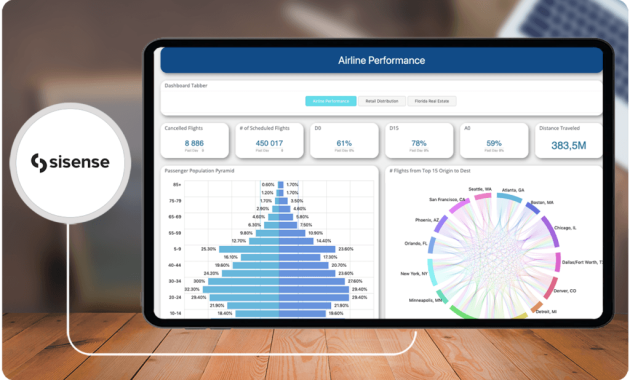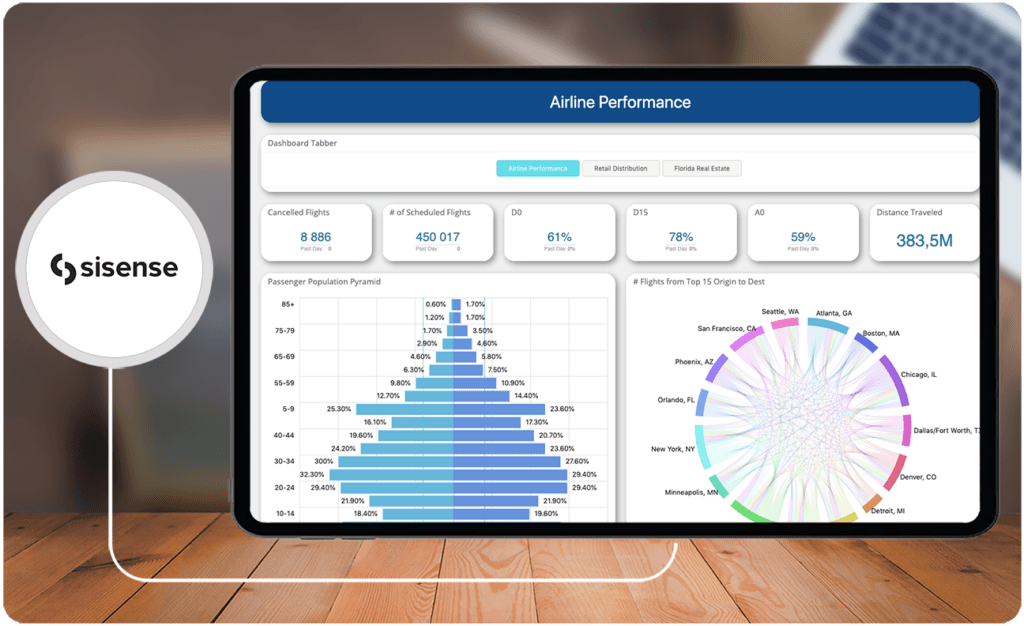
How to Improve Business Intelligence Software in 2025: A Strategic Guide
The landscape of business intelligence (BI) software is constantly evolving. As we approach 2025, the demands on BI tools are increasing. Organizations need more than just data visualization. They require actionable insights, predictive analytics, and seamless integration. This guide explores how to improve business intelligence software in 2025. It provides strategic insights for businesses looking to optimize their BI investments.
Understanding the Current BI Landscape
Before diving into improvements, understanding the current state of BI is crucial. Traditional BI focuses on historical data analysis. It often involves static reports and dashboards. Modern BI platforms offer real-time data processing, advanced analytics, and self-service capabilities. The shift is from reactive to proactive decision-making. BI software empowers users to explore data independently. This leads to faster insights and better business outcomes.
Key Challenges in Business Intelligence
Several challenges hinder effective BI implementation. Data silos prevent a unified view of information. Data quality issues lead to inaccurate analysis. Lack of user adoption limits the impact of BI initiatives. Complex interfaces and inadequate training can be barriers. Data security and governance are also major concerns. Addressing these challenges is essential for improving BI software in 2025.
Leveraging Data Integration for Enhanced BI
Data integration is the cornerstone of any successful BI strategy. The ability to connect diverse data sources is paramount. This includes cloud applications, databases, and legacy systems. Modern BI tools offer robust data connectors. They simplify the process of extracting, transforming, and loading (ETL) data. Data integration ensures a holistic view of the business. It enables more comprehensive analysis and reporting. The future of BI relies on seamless data integration capabilities. Improving business intelligence software requires this focus.
Data Warehousing and Data Lakes
Data warehousing provides a centralized repository for structured data. Data lakes accommodate both structured and unstructured data. These technologies are critical for data integration. They enable organizations to store and manage vast amounts of data. Cloud-based data warehouses are becoming increasingly popular. They offer scalability and cost-effectiveness. Data lakes provide flexibility for exploratory data analysis. Choosing the right architecture depends on business needs. Proper data warehousing and data lake implementation improve BI efficiency.
The Rise of Artificial Intelligence and Machine Learning
Artificial intelligence (AI) and machine learning (ML) are transforming BI. These technologies automate data analysis. They identify patterns and predict future trends. AI-powered BI tools offer predictive analytics and prescriptive insights. Machine learning algorithms can personalize dashboards and reports. They also automate data preparation tasks. Integrating AI and ML is key to improving business intelligence software in 2025. This integration adds significant value to BI initiatives.
AI-Driven Insights
AI-driven insights provide proactive recommendations. They alert users to anomalies and opportunities. Natural Language Processing (NLP) enables conversational BI. Users can ask questions in plain language. This makes data analysis more accessible. AI and ML enhance the capabilities of BI platforms. They provide deeper insights and faster decision-making. Implementing AI-driven features is essential for modern BI.
Enhancing User Experience and Self-Service BI
User experience (UX) is a critical factor in BI adoption. Intuitive interfaces and easy-to-use tools are essential. Self-service BI empowers business users to analyze data. This reduces reliance on IT departments. Modern BI platforms offer drag-and-drop interfaces. They also provide pre-built dashboards and templates. Training and support are crucial for user adoption. Improving business intelligence software involves focusing on UX. This improves self-service BI capabilities.
Mobile BI and Accessibility
Mobile BI allows users to access data on the go. This increases accessibility and responsiveness. Mobile-friendly dashboards and reports are essential. BI tools should support various devices. Accessibility features ensure inclusivity for all users. Mobile BI improves decision-making in real-time. It empowers users with data insights wherever they are.
Prioritizing Data Governance and Security
Data governance and security are paramount in BI. Protecting sensitive data is critical. Implementing robust security measures is essential. This includes access controls, encryption, and data masking. Data governance policies ensure data quality and compliance. Regular audits and monitoring are necessary. Prioritizing data governance is vital for improving business intelligence software. It builds trust and protects valuable information.
Compliance and Regulations
Businesses must comply with data privacy regulations. These include GDPR, CCPA, and others. BI tools should support compliance requirements. Data anonymization and pseudonymization are important. Data governance policies should align with regulations. Compliance ensures ethical data handling. It also mitigates legal risks. Ensuring compliance is an important aspect of BI software.
The Role of Cloud Computing in BI
Cloud computing offers numerous benefits for BI. Scalability and flexibility are major advantages. Cloud-based BI platforms are cost-effective. They reduce the need for on-premises infrastructure. Cloud solutions offer automatic updates and maintenance. Collaboration features are also enhanced. Leveraging cloud computing is key to improving business intelligence software. This provides scalability and cost savings.
Choosing the Right Cloud BI Platform
Selecting the right cloud BI platform is crucial. Consider factors like features, pricing, and security. Evaluate the platform’s integration capabilities. Consider the vendor’s support and reputation. The right platform aligns with business needs. It also ensures scalability and performance. Careful evaluation is essential for cloud BI implementation.
Predictive Analytics and Forecasting
Predictive analytics is a core capability of modern BI. It uses historical data to forecast future trends. Machine learning algorithms power predictive models. These models identify patterns and make predictions. Forecasting helps businesses make informed decisions. It optimizes resource allocation and strategic planning. Predictive analytics is vital for improving business intelligence software. It provides a competitive advantage.
Advanced Forecasting Techniques
Advanced forecasting techniques improve accuracy. Time series analysis and regression modeling are common. Machine learning algorithms enhance predictive capabilities. These techniques can identify complex patterns. They also improve forecasting accuracy. Advanced techniques add significant value to BI initiatives. They enable better decision-making.
Optimizing BI for Different Industries
Different industries have unique BI needs. Tailoring BI solutions to specific industries is important. Healthcare, finance, and retail have distinct requirements. Understanding industry-specific challenges is crucial. Customizing dashboards and reports improves relevance. Industry-specific BI solutions enhance decision-making. They address specific business needs effectively.
Examples of Industry-Specific BI
Healthcare uses BI for patient insights and resource allocation. Finance utilizes BI for risk management and fraud detection. Retail leverages BI for sales analysis and inventory management. Manufacturing employs BI for process optimization and quality control. Industry-specific examples illustrate the value of tailored BI. They highlight the importance of industry-specific solutions.
Future Trends in Business Intelligence
Several trends will shape the future of BI. Augmented analytics will automate insights generation. Data democratization will empower more users. Edge computing will enable real-time data processing. The metaverse will create new data visualization opportunities. Staying informed about these trends is crucial. It allows businesses to prepare for the future. These trends will continue to improve business intelligence software.
Augmented Analytics and Data Democratization
Augmented analytics automates data discovery and insights. Data democratization gives more users access to data. These trends increase data literacy. They improve decision-making across organizations. Augmented analytics and data democratization are key trends. They improve the effectiveness of BI initiatives.
Implementing a Successful BI Strategy
Implementing a successful BI strategy requires careful planning. Define clear business goals and objectives. Identify key performance indicators (KPIs). Choose the right BI tools and technologies. Develop a data governance framework. Provide adequate training and support. Continuous monitoring and evaluation are necessary. Successful BI implementation drives business value. It improves decision-making and outcomes.
Measuring BI Success
Measuring BI success is essential. Track key performance indicators (KPIs). Evaluate user adoption and satisfaction. Analyze the impact on business outcomes. Regularly review and refine the BI strategy. Measuring success ensures ongoing improvement. It also validates the value of BI investments.
Conclusion: The Future of Business Intelligence
Improving business intelligence software is an ongoing process. The key is to embrace new technologies. Focus on data integration, AI, and user experience. Prioritize data governance and security. By adopting these strategies, businesses can unlock the full potential of BI. They can make data-driven decisions. This will improve performance and gain a competitive edge. The future of business intelligence is bright. It will continue to evolve and transform the way we work. The goal is to continuously improve and adapt. This will ensure long-term success. By focusing on these key areas, organizations will be well-positioned. They can thrive in the evolving landscape of data and analytics. The continuous effort to improve business intelligence software will be crucial.
[See also: Related Article Titles]

